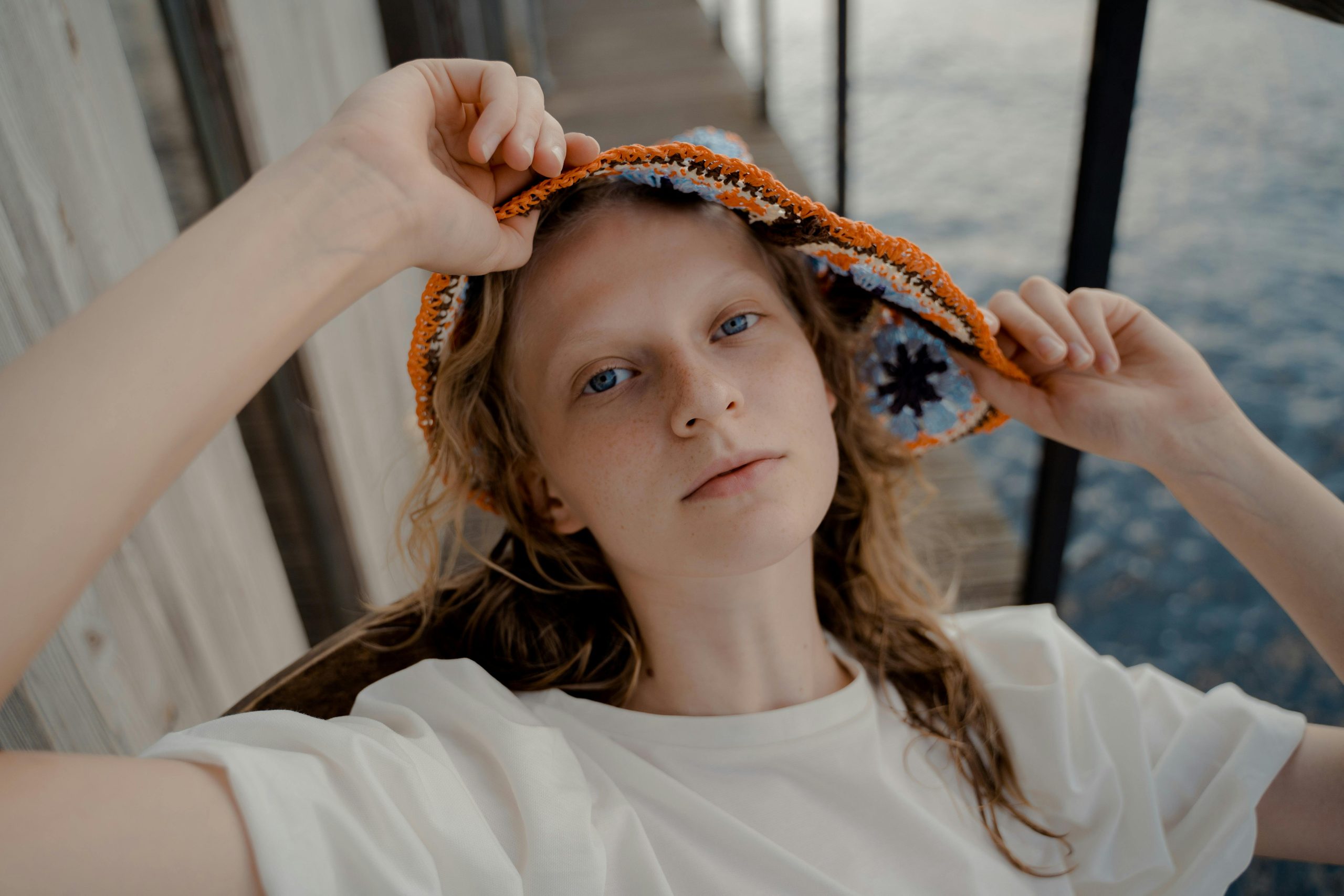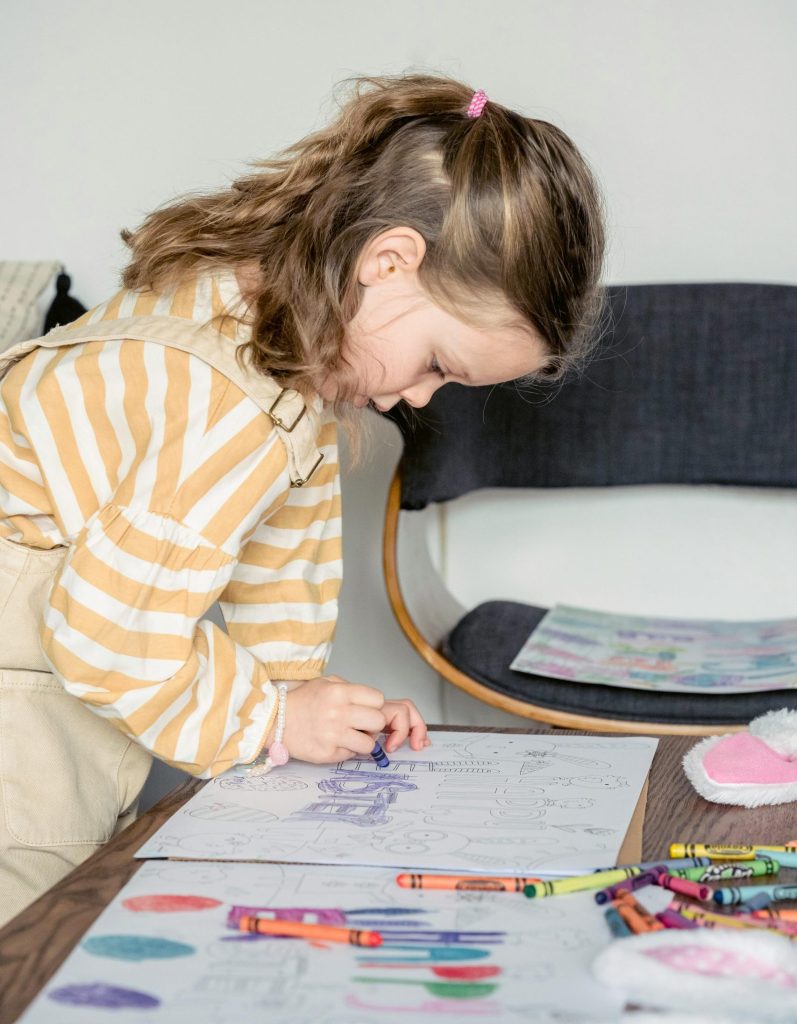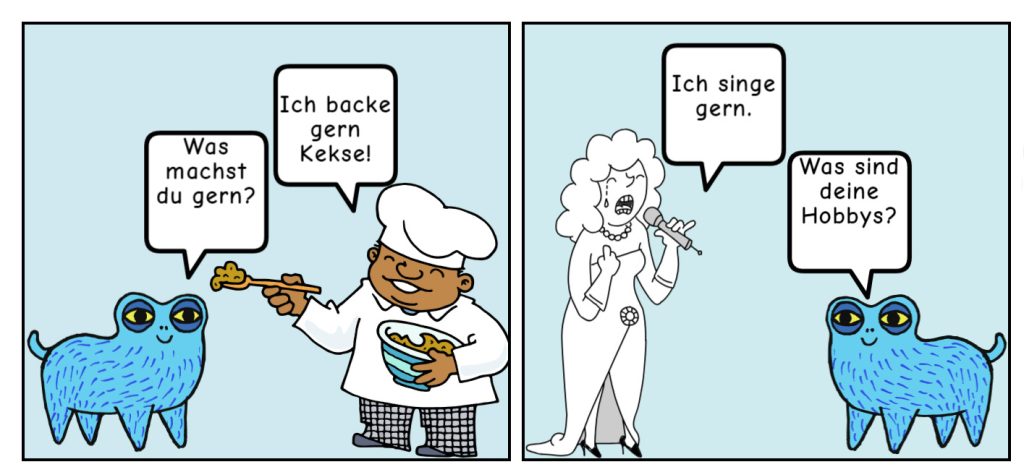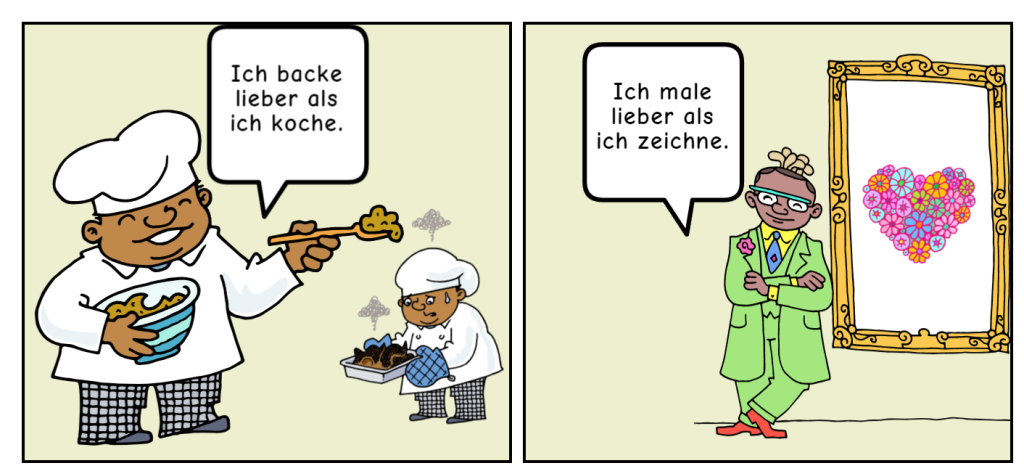4.7 Was ich lieber mache – Kreative Hobbys

Hallo allerseits!
Zum Aufwärmen machen wir unseren Tagesminiplausch und eine Wiederholung.
Wiederholung
In the previous lesson, you learned how to ask about meeting locations and meeting times. You also learned how to respond. Let’s review what you have learned.
Think about your upcoming plans with family or friends. Describe your next meeting time and location with a sentence that begins with, Wir treffen uns…
Lektionsüberblick
Knowing the hobbies someone enjoys can tell us a lot about that person. That’s why knowing how to engage in this topic of conversation can help build relationships. By the end of this lesson, you will be able to 1) name some creative hobbies, 2) ask what someone’s hobbies are, and 3) state which creative hobbies you prefer over other creative hobbies.
Was weißt du schon?
| Noch nicht start klar?
Du kannst immer auf die gleiche 1010-Lektion zurückgreifen! |
Not confident about starting this lesson?
You can always review the same Lektion from 1010. |
1) Kreative Hobbys
Hast du kreative Hobbies? Read and listen to the activities below.
Handarbeit
Machst du gern Arbeit mit deinen Hände? If so, find your hobby among the examples below.
Kunst
Musik machen
Spielst du ein Instrument? Welches? Click through the slides to find the instrument that you play.
Salzburg im Blickpunkt

 1816 schrieb Salzburger Priester und Dichter Joseph Franz Mohr das Gedicht Stille Nacht, heilige Nacht. 1818 ließ er eine Melodie dazu von Franz Xaver Gruber komponieren. Somit entstand das weltberühmte Weihnachtslied Stille Nacht, heilige Nacht. Sie führten das Lied zum ersten Mal am Heiligabend 1818 in der Sankt-Nikola-Kirche in Österreichisch-Laufen (heute Oberndorf) auf. Das Altarbild des Christkindes von der Wallfahrtsbasilica in Mariapfarr (rechts) inspirierte Mohrs Vers “Holder Knab’ im lockigen Haar”. Inzwischen gibt es das Weihnachtslied in 320 verschiedene Sprachen und Dialekte. Es wurde 1905 zum ersten Mal aufgenommen und heute gibt es mehr als 137.000 Aufnahmen. 2011 wurde das Lied von der UNESCO als immaterielles Kulturerbe in Österreich anerkannt.
1816 schrieb Salzburger Priester und Dichter Joseph Franz Mohr das Gedicht Stille Nacht, heilige Nacht. 1818 ließ er eine Melodie dazu von Franz Xaver Gruber komponieren. Somit entstand das weltberühmte Weihnachtslied Stille Nacht, heilige Nacht. Sie führten das Lied zum ersten Mal am Heiligabend 1818 in der Sankt-Nikola-Kirche in Österreichisch-Laufen (heute Oberndorf) auf. Das Altarbild des Christkindes von der Wallfahrtsbasilica in Mariapfarr (rechts) inspirierte Mohrs Vers “Holder Knab’ im lockigen Haar”. Inzwischen gibt es das Weihnachtslied in 320 verschiedene Sprachen und Dialekte. Es wurde 1905 zum ersten Mal aufgenommen und heute gibt es mehr als 137.000 Aufnahmen. 2011 wurde das Lied von der UNESCO als immaterielles Kulturerbe in Österreich anerkannt.
In 1816, Joseph Franz Mohr wrote the poem Silent Night, Holy Night. In 1818, he had Franz Xaver Gruber compose a melody for the poem. Thus, the world-famous Christmas carol Silent Night came into being. They first performed the song on Christmas Eve 1818 in the Saint Nicola Church in Österreichisch-Laufen (now called Oberndorf). Mohr was inspired by a golden-haired image of the Christ child from the high altar of the basilica in Mariapfarr (on the right) to write the verse “Lovely boy with curly hair” (which was rendered as “Holy infant so tender and mild” in the most-common English translation by John Freeman Young, 1859). In the meantime, the Christmas carol has been translated into approximately 320 different languages and dialects. It was recorded for the first time in 1905 and today, there are more than 137,000 recordings. In 2011, the song was recognized by UNESCO as an Immaterial Cultural Good in Austria.
In der Küche
Kochst du gern oder backst du gern? Look at the ways to express cooking and baking hobbies below.
Oftentimes we have creative hobbies so that we can be generous with others. Check out the example sentences below. Can you tell who is receiving the gift being made? Answer the questions below.
 |
 |
 |
| Ich backe meinen Hunden einen Kuchen. | Ich häkele meiner Mutter eine Mütze | Ich zeichne meinem Vater ein Bild. |
Let’s practice.
Jetzt bist du dran!
2) Was machst du gern? Was sind deine Hobbys?
As in most languages there is more than one way to inquire about hobbies. Read and listen to the comic below to see two ways for asking about someone’s interests.
Let’s practice using these questions.
Jetzt bist du dran!
3) Was ich lieber mache
Let’s review how to express a preference between two things, or in this case two hobbies. You learned how to do this with Kleidungsstücke in 3.12. (go back and review if needed). Let’s build upon this. Read the comic below. Can you tell which activity each character prefers?

Let’s practice!
Jetzt bist du dran!
Zum Schluß

*As you conclude this lesson, don’t forget to check Canvas!*

Media Attributions
- Stille Nacht, heilige Nacht text adapted from Wikipedia, licensed under a CC BY-SA 4.0 International License.
Media Attributions
- 1020-at-banner-large-1
- Photo of little girl by pexels-eren-li-7168990
- 4.7 comic make-beliefs-comix-26-e1728337534667
- “Lieber” comic made at www.MakeBeliefsComix.com
- Private:

